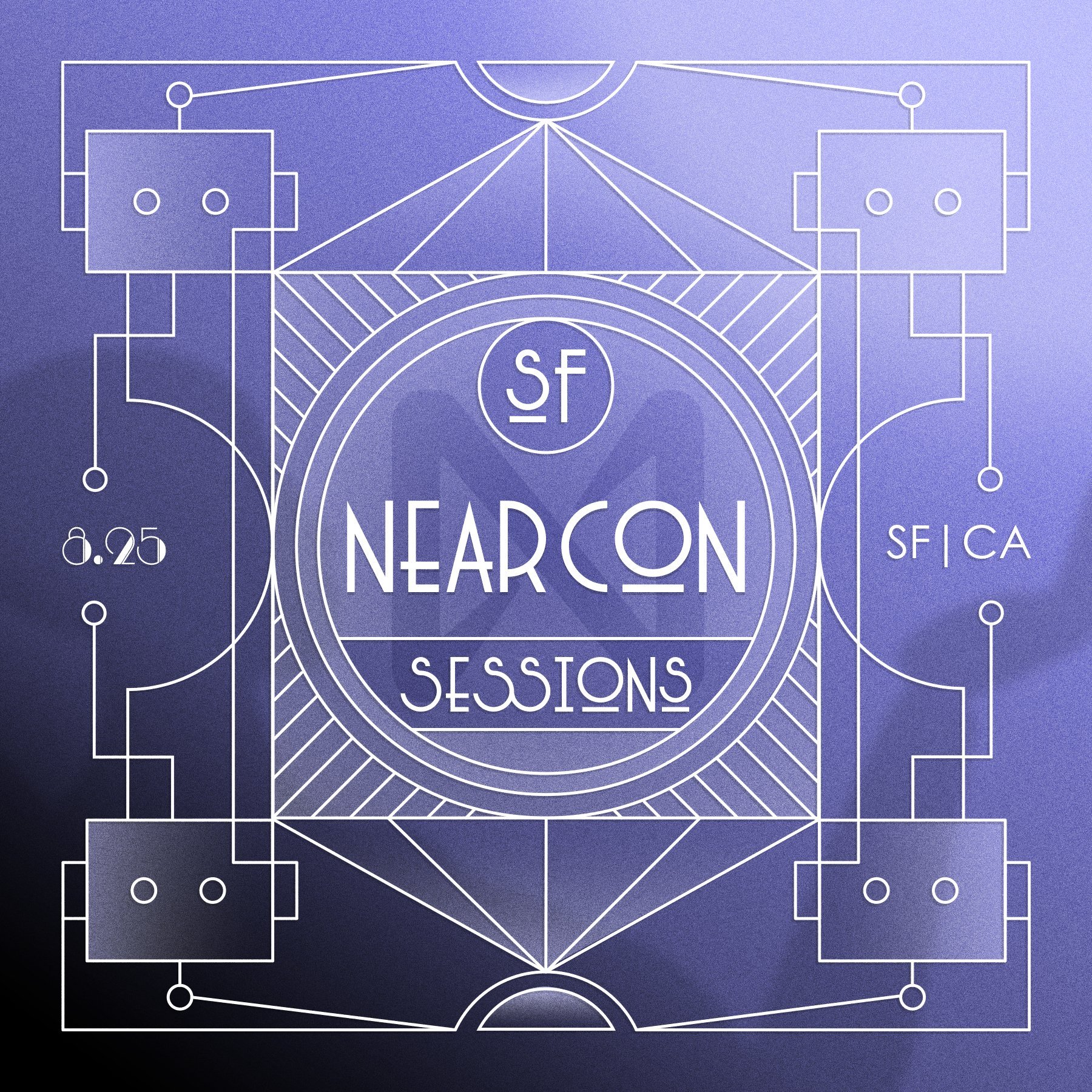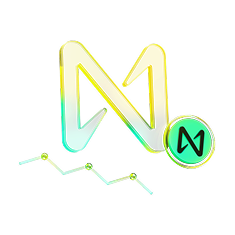What Is NEAR Protocol and How Does It Work
NEAR Protocol is a third-generation Proof-of-Stake blockchain that aims to solve the scalability issues plaguing earlier networks. The platform uses a unique sharding technology called Nightshade to process transactions across multiple parallel chains simultaneously. This approach allows NEAR to handle thousands of transactions per second while keeping costs low for users and developers.
The network operates on three core principles that set it apart from other blockchains. First, it focuses on user-owned AI, ensuring that intelligent agents work for their users rather than against them. Second, it implements chain abstraction and intents, which removes the complexity of blockchain interactions from the user experience. Third, its sharded architecture provides the speed and low costs necessary for mainstream adoption of both AI and Web3 applications.
NEAR's approach to blockchain technology is fundamentally different from monolithic chains like Ethereum (ETH). Instead of forcing all validators to process every transaction, NEAR divides the workload across multiple shards. Each validator only needs to process transactions for their assigned shard, which significantly reduces hardware requirements and allows more people to participate in network validation.
Review NEAR Price on LBank
NEAR() Price
The current price of
The Evolution of NEAR Protocol: From AI Research to Blockchain Platform
The story of NEAR begins in 2017 when Illia Polosukhin and Alexander Skidanov founded NEAR.ai. Their original goal wasn't to build a blockchain at all. They were exploring program synthesis - essentially teaching computers to write their own software. But when they tried to build their vision on Ethereum in 2018, they found the existing technology couldn't handle their requirements.
This limitation led to a major pivot in August 2018. The team decided to build their own blockchain from scratch. They spent nearly two years developing the protocol before launching the NEAR mainnet in April 2020. The network became fully functional in October 2020 when token transfers were enabled.
NEAR Protocol Timeline
The protocol's development has followed a carefully planned roadmap centered around sharding implementation:
Simple Nightshade Launch
Simple Nightshade (Phase 0) launches, introducing basic sharding
Phase One Expansion
Phase One begins, expanding sharding capabilities
BOS Launch
Blockchain Operating System (BOS) launches for cross-chain development
Phase Two Testing
Phase Two testing starts with stateless validation
Nightshade 2.0 Upgrade
Nightshade 2.0 goes live on mainnet with six active shards
Performance Upgrade
Major upgrade reduces block time to 600ms and finality to 1.2 seconds
Key Players Behind NEAR Protocol
The founding team brings impressive credentials from the traditional tech world. Illia Polosukhin previously managed a deep learning research team at Google and co-authored the groundbreaking "Attention is All You Need" paper that introduced the Transformer architecture used in modern AI models. Alexander Skidanov worked at Microsoft before becoming an architect and director of engineering at memSQL. He's also a decorated competitive programmer with multiple international awards. Erik Trautman, the third co-founder, served as NEAR's head of operations and CEO, bringing entrepreneurial experience to the technical team.
Today, the core development happens through Pagoda, which describes itself as the world's first Web3 startup platform. Pagoda maintains the NEAR Protocol, develops APIs and SDKs, and provides end-to-end tools for blockchain projects. The team has grown to over 70 members spread across 20 countries, reflecting the global nature of the project.
NEAR Protocol's Funding and Institutional Backing
NEAR Protocol has raised over $540 million from numerous prominent institutional investors, with the bulk of this funding coming from two massive rounds in 2022. This substantial war chest has provided NEAR with the resources to build robust infrastructure and attract top talent from both the crypto and traditional tech sectors.
The protocol's funding journey began modestly in July 2019 with a $12.1 million Series A round led by Accomplice and Metastable. This early round attracted notable participants including Coinbase Ventures, Pantera Capital, Multicoin Capital, and Digital Currency Group. Between 2019 and 2020, NEAR also conducted ICO and token sales that raised approximately $35 million from various crypto venture funds and individual investors.
The real funding explosion came in 2022. In January, NEAR closed a $150 million Series B round led by Three Arrows Capital (3AC). This round brought in heavyweight investors like Andreessen Horowitz (a16z), Alameda Research, Pantera Capital, Dragonfly Capital, Circle Ventures, Jump Capital, and Amber Group. Just three months later, in April 2022, Tiger Global Management led a massive $350 million venture round, with participation from FTX Ventures, Dragonfly Capital, and Republic Capital.
NEAR's institutional backing extends beyond pure venture capital. The protocol has secured strategic partnerships with major tech and Web3 companies like Google Cloud and Polygon. These partnerships provide not just funding but also technical resources and market access that help accelerate NEAR's growth.
The investor roster reads like a who's who of blockchain funding. Andreessen Horowitz, the major Silicon Valley venture firm, has been a long-time supporter since the early rounds. Tiger Global Management, the New York-based investment giant, demonstrated its confidence by leading the substantial $350 million round. Pantera Capital has shown consistent faith in NEAR, participating in multiple funding rounds since the protocol's early days.
Other significant backers include Electric Capital, Multicoin Capital, Blockchange Ventures, and Circle Ventures. Each brings not just capital but also expertise and connections that help NEAR navigate the competitive blockchain landscape.
However, the collapse of several major backers has created complications. Three Arrows Capital, which led the $150 million Series B, filed for bankruptcy in 2022. FTX Ventures and Alameda Research, both participants in major rounds, collapsed dramatically in late 2022. These failures don't directly impact NEAR's operations since the funding was already received, but they do affect the protocol's network of support and potentially its reputation by association.
NEAR vs Solana: Different Approaches to Blockchain Scalability

The trade-offs between these approaches are significant. NEAR's sharding provides modular scalability and lower validator costs, but cross-shard communication can introduce latency. Solana (SOL) offers near-instant finality and atomic composability, perfect for high-frequency trading and DeFi applications, but requires expensive hardware to run validators.
Recent Technological Upgrades and Nightshade 2.0
The Nightshade 2.0 upgrade marks a major milestone in NEAR's technical evolution. Launched in phases throughout 2024 and 2025, this upgrade introduced stateless validation, which dramatically reduces the data validators need to store. Validators no longer need to keep the entire blockchain state in memory. Instead, they can verify transactions using cryptographic proofs.
The upgrade also increased the number of active shards from four to six, boosting the network's transaction capacity by 50%. More importantly, block time dropped to just 600 milliseconds with finality achieved in 1.2 seconds. These improvements put NEAR's performance metrics closer to Solana's while maintaining lower hardware requirements.
Stateless validation represents a breakthrough for blockchain scalability. Traditional blockchains require validators to store ever-growing amounts of data. As the blockchain grows, so do the hardware requirements, eventually pricing out smaller validators. NEAR's stateless approach breaks this cycle. Validators can participate with modest hardware, keeping the network decentralized even as it scales.
Market Dynamics and Institutional Trading Activity
The summer of 2025 revealed both the promise and peril of institutional involvement in NEAR's ecosystem. In mid-August, NEAR's weekly active users hit 16 million, surpassing Solana's 14.8 million users. This milestone attracted $10.1 million in institutional inflows, pushing the price from $2.57 to $2.73.
But the celebration was short-lived. On August 14, institutional players dumped 32.2 million NEAR tokens in coordinated sells. The trading volume spiked to 3,500% above average. Two massive trades - 19.99 million and 12.22 million tokens - executed within hours of each other. The price crashed 6.9% in a single day.
This pattern reveals a troubling dynamic. Institutional money can drive powerful rallies, but it can also trigger devastating selloffs. On August 8, algorithmic trading bots sold 120,000 tokens in just four minutes. These sophisticated trading strategies create a fragile market environment where prices can swing wildly based on the decisions of a few large players.
The concentrated nature of these trades suggests coordination among institutional holders. When multiple large players decide to exit simultaneously, retail investors have little chance to react. This creates an asymmetric market where institutional players have significant advantages over individual traders.
Developer Experience and Tools
NEAR prioritizes developer experience above almost everything else. The platform supports multiple programming languages including Rust and JavaScript, making it accessible to developers from different backgrounds. Smart contracts can be written in familiar languages without learning blockchain-specific syntax.
The Blockchain Operating System (BOS), launched in March 2023, takes this further. BOS provides a common layer for developing and browsing open web experiences that work with any blockchain. Developers can build applications that seamlessly interact with multiple chains without writing complex bridge code.
Pagoda provides comprehensive developer tools including APIs, SDKs, and extensive documentation. The platform offers built-in account abstraction, human-readable account names, and progressive security features. These tools lower the barrier to entry for developers new to blockchain while providing powerful features for experienced builders.
The NEAR Dev incubator, launched in February 2025, offers direct support to development teams. Selected projects receive funding, mentorship, and technical assistance. This hands-on approach helps promising projects overcome technical challenges and reach production faster.

Image by: @NEARProtocol
The Path Forward: AI, Web3, and Beyond
NEAR's vision extends beyond being just another smart contract platform. The protocol positions itself at the intersection of AI and Web3, preparing for a future where intelligent agents handle complex tasks on behalf of users. The theme for NEARCON 2026, "The Internet Wants to Think," signals this long-term focus.
The proposed reduction in token inflation from 5% to 2.5% shows the protocol's maturation. As network usage grows, the need for high inflation to incentivize validators decreases. Lower inflation makes NEAR tokens more attractive as a store of value while still providing adequate validator rewards.
The deprecation of public RPC endpoints in summer 2025 marks another shift toward sustainability. Free infrastructure has limits, and sustainable node operations require proper incentive structures. This change pushes developers toward professional node providers, creating a more robust and reliable network infrastructure.
NEAR faces significant challenges ahead. Competition from established platforms like Ethereum and Solana continues to intensify. The collapse of major backers like FTX and Three Arrows Capital creates funding uncertainties. And the volatile institutional trading patterns raise questions about market stability.
Yet NEAR's technical foundation remains strong. The successful implementation of Nightshade 2.0 proves the team can deliver on ambitious technical promises. Growing user numbers show real adoption beyond speculation. And the focus on AI and chain abstraction positions NEAR for emerging use cases that don't exist yet.
The next phase of NEAR's evolution will test whether its unique approach to scalability and user experience can capture significant market share in an increasingly competitive landscape. Success will depend on continued technical innovation, developer adoption, and finding the right balance between institutional and retail participation in its ecosystem.

